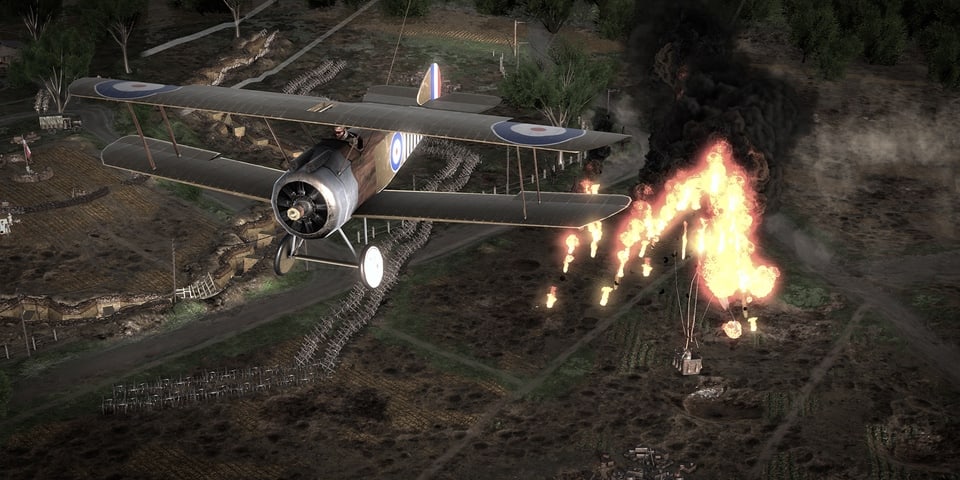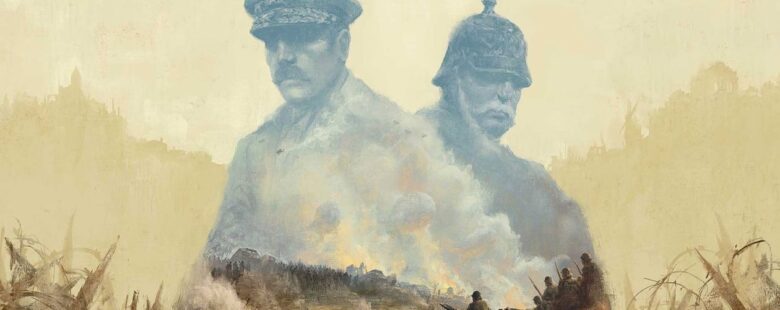Never again, thought the leaders of the world’s greatest nations at the end of World War I, would there ever be as senseless a loss of life as this. It would be the war to end all wars heralding a new age of diplomacy and peaceful resolution of disputes. It was a sentiment that barely lasted two decades. Over a century later? Well… as a race, we’ve still not learnt this lesson.
Through The Great War: Western Front, you take command of either the Allied Powers or the Central Powers, marshalling the combined forces alongside the hundreds of miles of trenches that run through Belgium and France. You have two hats to wear through this, with command over the theatre as a whole in strategic turn-based manoeuvres, before shifting into the role of Field Commander, sending troops over the top, sending artillery barrages and air cover to push the front line forward.
While there’s a grand campaign map to pour over that spans this front, there’s also six historical battles, taking a famous battle and scenario and giving you the ability to take command through a more defined sequence of events that have been scripted to be more true to life. There’s a certain element to this that might feel a bit, well, callous. It’s strange taking battles that are still within, not living memory, but the wider public consciousness thanks to the focus of the history curriculum through our education system, Remembrance Day being marked each year, and more.
Petroglyph has taken care to work with the Imperial War Museum to ensure that these historical battles go hand in hand with archival footage, putting it within a certain historical context. It might still be strange to think that you can “play” with real battles like this, but the act of doing so feels like less of a jingoistic glorifying ritual than Call of Duty games or the vast majority of Hollywood war films.

We went hands-on with the historical scenario based on the 2nd Battle of Passchendale, which was the final attack during the Third Battle of Ypres, focusing on the Canadian Corps that led the assault on the entrenched German positions.
Timing is key in The Great War: Western Front. As you send troops over the top and venture into no man’s land, they’re completely exposed to enemy machine guns and artillery that can cut them down in no time. The answer to this is a mixture of suppressing artillery fire on the defensive positions, combined with rolling smoke barrages to obscure the advance (hopefully just in front of your advancing troops). Meanwhile, the first wave of troops needs to be followed by a second, third wave and potentially more, filtering through from surrounding trenches and marching onto the map as summoned reinforcements.
Thankfully you have control over the flow of time, slowing and speeding it up as you wish to help you manage this. You don’t have unlimited resources, though. Every artillery barrage or air force sortie costing supply, and these tools needed to counter everything from barbed wire, gun emplacements, barrage balloons, and enemy aircraft.

Successes on the battlefield can reward you with more resources, supply, troops, and different troop types to choose between, but every advance is sure to be met with a counterattack. Waves of enemies will march toward you, bringing their own artillery to bear and using the exact same tactics you’ve just employed against you.
After capturing and holding a central position, the scenario shifts to giving you the task to capture the German HQ further up the map, with additional objectives of capturing artillery placements on either flank and bolstering your own with bettered forward firing positions.

With time running out in our hands on session, I did the stupid thing, selecting all of my troops on the front line and sending them all over the top to rush headlong at those final defensive positions. Without enough focussed fire to subdue the machine gunners, without the preparatory fire to cut through barbed wire, and with poorly managed smoke, it went about as badly as you would expect.
There’s something about WWI as a setting that’s strange for me to contemplate as a video game. However, The Great War: Western Front does well balancing the necessary tone and historical context with the engaging tactical nuance of a game, showcasing some of the real tactics and strategies employed during the war, and making you feel a pang of guilt if an assault goes horrendously wrong.



